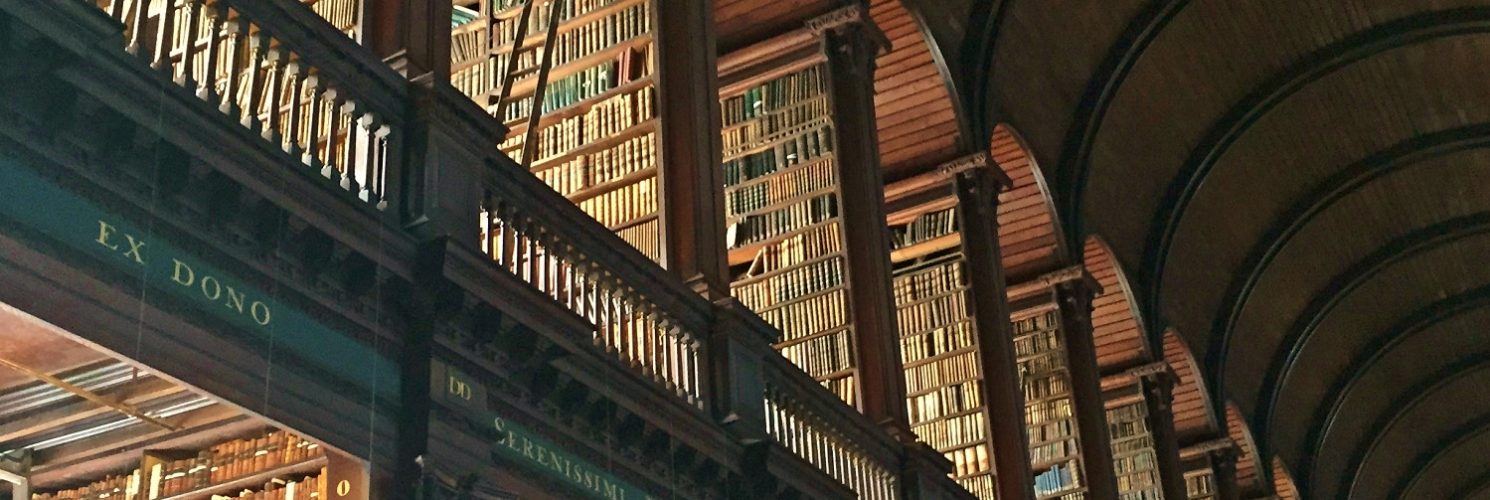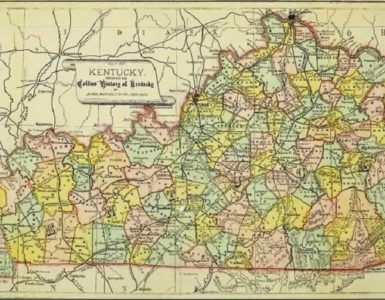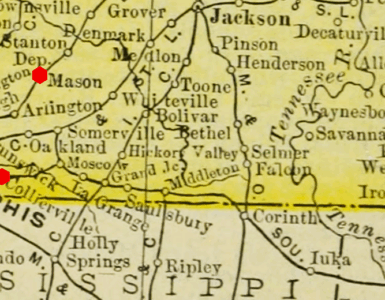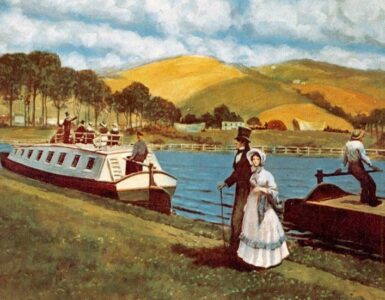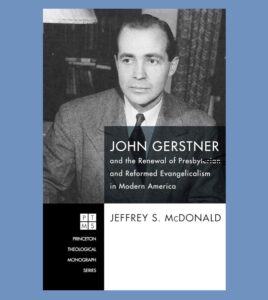 Jeffrey S. McDonald’s John Gerstner and the Renewal of Presbyterian and Reformed Evangelicalism in Modern America, 2017, is an informative biography of a seminary professor serving in an era of crucial events in American Christianity during the last sixty years of the twentieth century. The author is a Presbyterian minister, historian, and author, who in 2015 was instrumental in founding the Presbyterian Scholars Conference. The centennial of J. Gresham Machen’s Christianity and Liberalism last year reminded Presbyterians of the fundamentalist-modernist controversy of the nineteen-twenties and the founding of Westminster Seminary (WTS, 1929), as well as the Orthodox Presbyterian Church (OPC, 1936). However, in later years there were confessional, Reformed evangelicals such as John Gerstner who carried on the apologetic for supernatural Christianity against the theological-scientific naturalism of what evangelicals often describe generically as liberalism. Dr. McDonald shows that Gerstner was influential from the lectern, in the pulpit, and through writing for a variety of publications. He presents Gerstner in the context of Reformed evangelicalism as it developed during the era of the Second World War, through the turbulent nineteen sixties, then beyond the life and gender views wrought by Roe vs. Wade in the seventies, and on to his death at the end of the millennium while through it all defending the faith built upon the supernatural and inerrant Bible. The reviewer purchased the e-version book for this review, but it is also available in hardcopy.
Jeffrey S. McDonald’s John Gerstner and the Renewal of Presbyterian and Reformed Evangelicalism in Modern America, 2017, is an informative biography of a seminary professor serving in an era of crucial events in American Christianity during the last sixty years of the twentieth century. The author is a Presbyterian minister, historian, and author, who in 2015 was instrumental in founding the Presbyterian Scholars Conference. The centennial of J. Gresham Machen’s Christianity and Liberalism last year reminded Presbyterians of the fundamentalist-modernist controversy of the nineteen-twenties and the founding of Westminster Seminary (WTS, 1929), as well as the Orthodox Presbyterian Church (OPC, 1936). However, in later years there were confessional, Reformed evangelicals such as John Gerstner who carried on the apologetic for supernatural Christianity against the theological-scientific naturalism of what evangelicals often describe generically as liberalism. Dr. McDonald shows that Gerstner was influential from the lectern, in the pulpit, and through writing for a variety of publications. He presents Gerstner in the context of Reformed evangelicalism as it developed during the era of the Second World War, through the turbulent nineteen sixties, then beyond the life and gender views wrought by Roe vs. Wade in the seventies, and on to his death at the end of the millennium while through it all defending the faith built upon the supernatural and inerrant Bible. The reviewer purchased the e-version book for this review, but it is also available in hardcopy.
John Henry Jr. was born in Tampa, Florida, November 22, 1914, to John, Sr., and Margie (Wilson) Gerstner. Shortly thereafter the family settled in Philadelphia. He was a good student, edited the school newspaper, enjoyed sports, and participated in debate club. He grew up without Christian influences until high school when he met a girl who was a member of a United Presbyterian Church of North America (UPCNA) congregation. He went with her to services and youth meetings. The UPCNA traced its ancestry to seventeenth-century Scotland through the Associate Synod; it was not the same (at this point in history) as the PCUSA. Unsure about his future he visited Philadelphia School of the Bible where an administrator named J. D. Adams explained the message of the Bible so that Gerstner “finally understood the heart of the gospel message” (21). Intending to become a medical missionary he enrolled in the UPCNA’s Westminster College in New Wilmington, Pennsylvania. Consistent with his medical interests he studied science and worked in a sanatorium for income. As was common among students of the era, he joined the YMCA and was president of the campus chapter. Half-way through college he changed his major to theology, which likely resulted from advice given by his mentor, Professor John Orr, who was a Princeton Seminary alumnus that held the teaching of B. B. Warfield in high regard. It was the Calvinism of Orr’s lectures that steered Gerstner into the Reformed path, particularly as he came to see that regeneration precedes faith. Gerstner graduated in 1936 then continued his UPCNA directed education at Pittsburgh-Xenia (Pitt-Xenia) Theological Seminary. Gerstner was quickly disappointed because he found the academics unchallenging, so he transferred to WTS beginning the fall of 1937. When he graduated with the Batchelor of Divinity and Master of Theology in 1940, the question was what to do next. After considering further study at Princeton Seminary and the University of Chicago, he went to Harvard for doctoral work. Gerstner returned to Pittsburgh to teach at Pitt-Xenia in September 1950 and continued through the merger of the UPCNA and PCUSA in 1958 to form the United Presbyterian Church in the U.S.A. (UPCUSA). The merger including joining Pitt-Xenia with the PCUSA’s Western Seminary to form Pittsburgh Theological Seminary. As Gerstner found out, Machen had resisted the reorganization of Princeton, so he would resist the reorganization of Pitt-Xenia with liberal influences from the Western faculty. One joy of these years was teaching at Trinity College in Deerfield, Illinois, where he was welcomed and greatly respected. He retired because he was of age and weary of the challenges faced as an evangelical in an increasingly liberal faculty. In 1990 he joined the Presbyterian Church in America (PCA). John Henry Gerstner, Jr., passed away March 24, 1996.
McDonald provides a detailed, documented, and critical account of the life of John Gerstner. Among the subjects covered is Gerstner’s classical evidential apologetics method as compared with the presuppositional method of Cornelius Van Til. He admired Van Til in at least one area saying that he was “one of the two best pedagogues I’ve ever had from the standpoint of stimulating thought” (34). This is an interesting comment because McDonald points out an aspect of Gerstner was proficiency at engaging students with his lectures and challenging them to think critically. One of Gerstner’s most gifted pupils was R. C. Sproul (1939-2017) whose ability to engage, educate, and encourage was surely influenced by his mentor’s example. When Sproul began his work with the Ligonier Valley Study Center (Ligonier Ministries), he often had Gerstner deliver lectures and participate in other aspects of the ministry. Gerstner and Van Til continued to differ in apologetic method with critical assessment of Van Til’s presuppositional method being published in Classical Apologetics, 1984, edited by Gerstner, Sproul, and Arthur Lindsley.
Defending Scripture as the Word of God is an unending challenge and questioning the truth of God began in Eden with Satan’s, “Hath God truly said?” Gerstner’s scholarship was important for defending the Bible. In 1973, Ligonier held a “Conference on the Inspiration and Authority of Scripture,” from which the Ligonier Statement on inerrancy was composed. The book, God’s Inerrant Word, 1974, was published including the lectures of the conference speakers. The inerrancy statement affirmed the historic doctrine of Scripture with the signatories and lecturers including Gerstner, Sproul, John Frame, and J. I. Packer, among others. Gerstner lectured at the conference on “Warfield’s Case for Biblical Inerrancy.” The International Council on Biblical Inerrancy (ICBI) was established in 1977 with influence from Gerstner who also promoted the ICBI’s vital Chicago Statement on Biblical Inerrancy the following year.
One of Gerstner’s publications issued in three volumes resulted from his years studying the theology of Jonathan Edwards; it is titled, The Rational Biblical Theology of Jonathan Edwards, Ligonier, 1991-1993. Reviews were mixed and the books bore evidence of being rushed to the press. The dedication in volume one when it was published in his seventy-eighth year of life expresses the situation from Gerstner’s perspective.
To Ligonier Ministries, and friends of “The Gerstner Project” without whose godly goading and support these volumes may never have been produced.
The disadvantage of lifetime studies of a subject is that writers are often in their last years with age affecting their ability to process thoughts as quickly and as thoroughly as he had in the past. Gerstner realized he was running out of time for the Edwards project and urgency affected the result. But Gerstner’s work on Edwards, says McDonald, constitutes a massive study that “represented a milestone in Edwards studies because it was the first major systematic summary of Edwards’s weighty theology” (189). Gerstner’s set will continue to be an important resource for students of Jonathan Edwards.
An issue that could have been included if the sources are available is Gerstner began studies at WTS the fall of 1937, which is the same year that Old Testament professor Allan Macrae, student Francis Schaeffer, and others left WTS to join Carl McIntire in the Bible Presbyterian Church and his new Faith Theological Seminary. The departures were due to views of the millennium and the meaning of Christian liberty. It would be interesting to know Gerstner’s perspective on the situation as a student that had not been in the Machen circle that left Princeton, and whose closest experience with the OPC appears to have been supplying pulpits and marrying Edna Suckau who was in the OPC when they met.
Jeffrey McDonald has provided a thought-provoking biography supported by over a thousand footnotes that document sources including Gerstner’s writings, reviews of his writings, recordings, judicatory records, letters, web material, and interviews of his students and colleagues. The nineteen-page bibliography shows a wide variety of sources accessed by McDonald. The book provides another angle on the fundamentalist-modernist controversy of the twenties as its influences played out in Gerstner’s era, and it reinforces the significance of Machen and his colleagues’ role affirming supernatural Christianity. However, John Gerstner’s scholarship was and continues to be influential, but his greatest legacy may be the many students that experienced his engaging lectures and remember him fondly even though, in some cases, they did not agree with all his teaching. Those he redirected from the liberal path to the Reformed and evangelical gospel surely owe him a great debt.
Barry Waugh
P.S.—The fiftieth anniversary of the Chicago Statement on Biblical Inerrancy will be in 2028. Information about ICBI and the Chicago Statement are available in the article posted in April 2024 by Jeffery Stivason titled, “The Chicago Statement on Biblical Inerrancy,” which can be accessed through The Aquila Report. If you are confused about the different but alphabetically similar names of Presbyterian denominations see D. G. Hart & John R. Muether, Seeking a Better Country: 300 Years of American Presbyterianism, Phillipsburg: P & R, 2007, which tells of the divisions, unions, and ministry of Presbyterians in the text and by means of a genetic flowchart inside the front cover. The header shows the Old Library of Trinity College, Dublin, Republic of Ireland.


